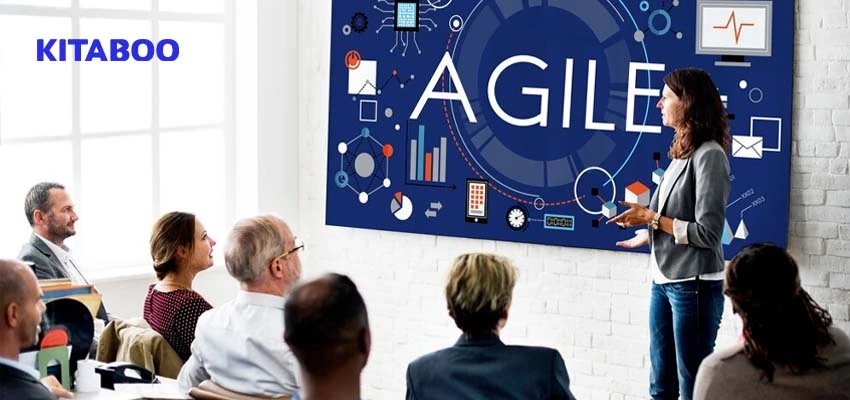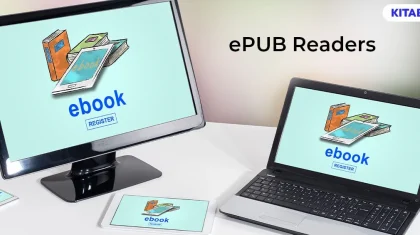
Agile Product Development: Adapting to the Pace of EdTech
Summarize this blog with your favorite AI:
Current pedagogical approaches, be it in rural schools or less tangible materials, largely cater to teaching styles and educational philosophies established a century ago, necessitating a shift towards more contemporary methods. As revolutionary as it was back in the day, in the 21st century, this can become insufficient and dimensional.
One of the key cons can become the one-way capillary of imparting education, which ensures the delivery of the teacher but not the receptivity of the student. Leading to this, there is a parroting of knowledge and stagnancy formed in the educating procedure and system alike.
Even with the onset of Educational Technology, there has been a tilt towards using the same mold with a different approach. Some of the most challenging difficulties faced by traditional or conservative knowledge imparting in today’s dynamic and industrious setting are:
- Lacking in providing a personalized and individualistic recognition to each mind and each student.
- Failing to ensure any linear or non-linear but substantial and steady growth, progress, or sprinting in the qualitative or quantitative aspect of the pedagogy being received.
This is where introducing agile product development into the vast arena of education technology creates the bridge that conservative pedagogy approaches cannot mend.
For instance, KITABOO’s cutting-edge digital textbook platform comes equipped with apt agile learning development capabilities. Let’s understand more about this secret weapon in the education provider’s arsenal and its benefits.
Table of Contents
I. What is Agile Product Development?
II. How Agile Product Development Facilitates Educational Technology
III. 4 Benefits of Agile Product Development
IV. How to Access Agile Product Development
V. Conclusion
What is Agile Product Development?
Agile product development is a 21st-century flexible, iterative method of developing software and products that emphasizes user feedback, flexibility, and teamwork. Its goal is to rapidly and often offer small, useful portions of a product so that it may be improved continuously and adjusted to meet evolving needs.
How Agile Product Development Facilitates Educational Technology
The history of traditional pedagogy in today’s milieu restricts learning possibilities to human, social, and geographical limitations. EdTech has successfully created a rupture into this feudal system.
Now, with the amalgamation of Agile educational developments in this newfound pedagogy, education can finally become accessible, personalized, and multi-dimensional. Some of its key features are:
Adaptability
Agile groups are regularly encouraged to invite new changes. It is imperative for the team to feel the adaptability and flexibility to adjust to all the evolving requirements and ever-changing set of priorities. That is, of course, without having to jeopardize the project’s all-in-all-time constraints.
User Participation
The overall satisfaction and needs of the user are of prime value in Agile. Stakeholders or customers are rightfully invested at all stages of the development process, offering feedback at every iteration. This ensures that the final product fulfills all of the user’s requirements.
Collaborative Space
Agile aims at creating a strong emphasis on close cooperative space between customers, designers, developers, and product managers, all in cross-functional teams. Everyone being able to swiftly adjust to changes and stay on the same page is made possible by regular feedback and communication. Regular feedback and communication ensure the possibility of quick fixes and changes.
Continuous Services
The goal to achieve in an agile setup is delivering products or services in steady levels of regularity and with increments instead of having to wait for the conclusion of each developmental cycle. This aids with a better and faster time-to-market, which in turn facilitates the possibility of quicker and newer customer feedback.
Transparency
Pedagogical transparency is promoted and encouraged at all points and levels in agile product development. Both the team as well as the stakeholders can visit the progress made, issues arising, and impediments, which ushers in a collaborative work culture of openness and clarity.
4 Benefits of Agile Product Development in the EdTech Industry
This is a brief analysis of how incorporating state-of-the-art agile product development into education technology can enhance and maximize its utility and aim to provide a newfound redefined education to students of any kind, from anywhere.
1. A Spectrum of Providing Collaboration and Choice
In a conservative classroom or online setting, the average student has extremely limited access to cerebral and intellectual participation and mobility.
All they do is listen and try to memorize the same. With agile learning, products, and development, the first space allotted is for the student. These methods ensure collaboration and choice:
- Groups of 3 to 4 people are formed to interact with each other. Interaction is of prime importance.
- The teachers ensure to empower, coach, support, observe, facilitate, model, demonstrate and clarify while the students aim to engage, question, choose, observe, contribute, and create.
- Visible learning artifacts and Learning Sprints are put into practice to make sure the dynamic nature of the progress of students is monitored and guided.
2. Iterative and Calculative Developmental Progress
Work is grouped up into smaller pieces, known as iterations or learning sprints. Each of these sprints or iterations lasts for a period of a couple of weeks (3-4 weeks), which gives the ultimate result of the creation of a shippable and ready service or product.
3. Learning Sprints and Visible Learning Artifacts
The learning sprint is a time-framed learning curve, which usually is four weeks. It is an iterative method with its own cadence. It follows the method of refinement, planning, checking-in, reviewing, and retrospection.
Visible learning artifacts, on the other hand, ensure the proper use of the learning sprint by the educator by attributes like- learning backlog, item of backlog, sprint backlog, criteria of success, choice, collaboration, and progressive increment.
4. Risk Mitigation
Adapting Agile development into education technology ensures practices like regular integration, continuous testing, and regular identifying and checking of reviews to make quick addresses.
This enterprising, energetic, and invested approach makes sure that the risks of massive setbacks are minimized while also making sure that goals are met and progress is smooth.
How to Access Agile Product Development?
Incorporating product development and industrial agility into the classroom sphere and matching up to the areas beyond the classroom- the EdTech industry can be quite a daunting task for educators.
This is precisely when cloud-based, Artificial Intelligence (AI) driven automated digital textbook platforms like KITABOO revolutionize the methods in which educational content can be formulated and disseminated and learning effectiveness tracked.
Educating the stakeholders and members on Agile principles is of utmost significance. This may include the principles behind Agile frameworks like Scrum, Kanban, or Extreme Programming (XP). This can be followed by introducing agile tools and, finally, by practicing scaling to other enterprises once the development process settles in.
Conclusion
To reach a more global approach to pedagogy and education, EdTech becomes indispensable. The next struggle that remains is to keep EdTech relevant, ever-evolving, and accessible.
This is where agility and agile product development, with its focus on high availability and reliability and personalized and ever-evolving methodologies, will ensure that EdTech keeps at pace with the dynamic needs of today’s work industry, education, and pedagogy.
Education publishers and providers can leverage state-of-the-art cloud-based digital textbook platforms like KITABOO to publish, distribute, market, and amplify their solutions to their audiences worldwide.
Connect with us to start a conversation.
To know more, write to us at mailto:contact@kitaboo.com.
Suggested Reads:
Trends in Education Technology
Best Apps to Read PDF Books on Android Devices
Discover how a mobile-first training platform can help your organization.
KITABOO is a cloud-based platform to create, deliver & track mobile-first interactive training content.


